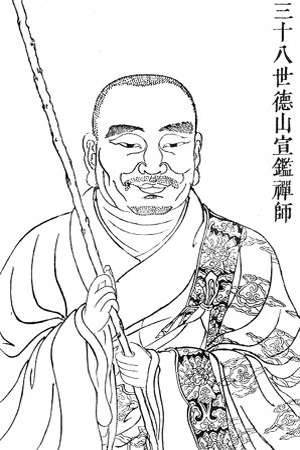I vaguely remember a story—I’m not sure if it’s true or a joke, or if I am even remembering it correctly—that someone once asked Sigmund Freud about a patient who successfully completed psychoanalysis but still behaved like a jerk. How did Freud account for this? Freud allegedly quipped the patient was a “well-analyzed jerk.” Freud’s quip points to the possibility of a complex relationship between psychological health and being a decent human being. The two, according to psychoanalysis, are not necessarily the same. But one can imagine other psychotherapeutic approaches that include an ethical component: ones that hold it is impossible to be optimally psychologically healthy but still be a jerk. Good arguments can be made for and against each of these kinds of approaches. While we believe there ought to be some relationship between health and decency, we don’t want to insist that all bad behavior is necessarily due to illness or insist that very bad people are necessarily incapable of experiencing untroubled well-being. “Healthy” and “good” often go together, but sometimes part company.
Zen raises the similar question of whether being an enlightened being makes one an admirable one. According to the classical Theravada Buddhist tradition it certainly does. According to the Theravada tradition, enlightened people are characterized by non-greed, non-hatred, equanimity, wise speech, compassion, and lovingkindness. But in Zen—both in the traditional Zen stories from antiquity and modern stories about present-day Zen masters—we encounter allegedly enlightened beings who behave like jerks.
Consider the Tang Dynasty Chinese Chan master Déshān Xuānjiàn as he appears to us in the Blue Cliff Record case entitled “Déshān Carries His Bundle.” Déshān visits Guīshān Língyòu’s monastery, but he enters the assembly hall with his pilgrim’s bundle under his arm (instead of taking out his robes and donning them) and crosses back and forth across the assembly hall without acknowledging Guīshān’s presence. And then he mutters, “wú, wú!” (“nothing, nothing!”) and leaves without further ado. His “wú” is both an expression of his degree of realization (recall the “wú!” in Zhàozhōu’s Dog) and simultaneously a dismissal of Guīshān and his assembly as having nothing to offer.
Later in the koan Déshān reconsiders his action. He decides he shouldn’t have acted like such a barbarian and ought to try again. This time he dons his monk’s robes, approaches Guīshān, takes out his zagu (bowing cloth) as if to bow and acknowledge him–but in the end, he doesn’t actually bow down. Guīshān returns his feint, moving “as if” to pick up his hossu (symbol of teaching authority) but not actually picking it up. We are told Déshān shouted “Kaatz!” and left “swinging his sleeves,” turning his back to the assembly hall, and stomping off into the sunset.
The next day, Guīshān comments on Déshān saying that one day he will “go to an isolated mountaintop, establish a hermitage, and scold the Buddhas and abuse the patriarchs.” Guīshān seems to be saying three things. First, that he recognizes Déshān’s very real degree of realization, but second that he realizes Déshān is not quite “there” yet. Déshān has been to the mountaintop but hasn’t yet re-entered the marketplace. One day, however, he predicts, Déshān will be “there.” But—and here is the third point—even when he has reached the end of the Zen path he will still be a bit of a jerk. We can read “scolding the Buddha and abusing the patriarchs” in two ways. The first is a positive way–the way exemplified by the saying, “If you see the Buddha on the road, kill him.” But second, Guīshān is saying something important about Déshān’s character—”yes, enlightened, but still a barbarian.”
When I read the title of this koan, “Déshān Carries His Bundle” I was reminded of the Beatle’s lyric, “Boy, you’re going to carry that weight a long time.” It seems it’s Déshān’s fate to have to carry his character a long time. Enlightenment is not going to alter it, and like everybody else, he is condemned to express his enlightenment through the character he has been granted by genetics, upbringing, and the vicissitudes of fate. Everyone’s understanding and expression of realization is, for better or worse, partial and unique.
Déshān’s koan reminds me of disgraced teachers like Eido Roshi and Joshu Sasaki Roshi who were renowned (by many) for their degree of realization and yet were also serial sexual abusers. How could teachers revered for their degree of realization be repeatedly and unapologetically abusive? Was their realization just a mirage—a mixture of performance on their part and projection on the part of their students? If one can have genuine realization and still behave like a jerk, what good is it?
Part of me would like to dismiss their realizations as simply a mere lie—but I know and respect two of Eido Roshi’s former students—one male, one female—who remain appreciative of what they learned from him despite acknowledging his substantial character flaws. Similarly, Shozan Jack Haubner, the author of Single White Monk (Shambhala, 2017), remained appreciative of what he learned from Joshu Sasaki Roshi despite also acknowledging his substantial character flaws.
So, what is one to make of this?
First, it helps to avoid absolutization. “Realization,” enlightenment,” and “awakening” are neither all-or-none nor once-and-forever events. They are awarenesses that can be more-or-less, gained or lost, and manifest or obscured. The Zen path is a journey without a final resting place or destination. We are never “there”—we are always just “here” at this juncture in our journey, with all that “here” currently implies. Whatever is realized can also be compartmentalized–held separate from the rest of one’s personality—although under ideal conditions it gradually generalizes until it comes to infuse most (but probably never all) aspects of one’s being.
Second, it helps to think about the domain of enlightenment as something developing along multiple semi-independent lines. The developmental lines of becoming more compassionate or developing ethical discernment may start out as separate or semi-independent from the lines of glimpsing non-duality or developing one’s capacity for mindfulness, immediacy, and presence.
Third, people are never as entirely good as their best accomplishments, nor entirely as bad as their worst crimes. Is it possible to see people whole without idealizing or vilifying them in toto? Aristotle was a great philosopher with awful views on slaves and women; Thomas Jefferson advanced the cause of democracy while owning a plantation full of slaves; Roald Dahl wrote glorious children’s books and was an unrepentant antisemite; Pablo Picasso was a gifted artist and a misogynist; Martin Luther King was a visionary civil rights leader and cheated on his wife; and it’s possible to be a spiritual teacher who inspires some students and abuses others. This is not an argument that teachers who abuse students should be allowed to continue teaching. It is an argument for not dismissing out-of-hand that these teachers may have some genuine degree of attainment along with their significant character flaws.
Fourth, there is a difference between the Zen path that emphasizes wholeness and the reconciliation of opposites and a more traditional Buddhist path that emphasizes virtue. The tension between these two paths is unresolvable. They are the yin and yang of human flourishing: are we trying to be good or trying to be whole? Trying to be good without trying to be whole–and trying to be whole without trying to be good–are both already mistakes—but the paths to wholeness and goodness do not always lead us to the same place.
Fifth, these issues are exacerbated by the culturally and historically conditioned role of Zen master—a role that creates opportunities for character flaws to go unrealized and metastasize. Students project their aspirations for infallible wisdom onto the Zen master; the danger is the Zen master may reciprocate, taking on those projections and acting them out as if they were real. The private, secretive nature of dokusan creates a theater where the drama of these projections and ego-inflations can then be played out. Whenever alleged wise-persons and supplicants meet in secrecy and private, the same problems readily arise. The psychoanalytic literature has a good deal to say about this problem and aspiring spiritual teachers and their mentors ought to deeply acquaint themselves with it.
So, what good is realization then?
Intimations of interbeing, transience, and the open, unfixed nature of “self” enrich our lives and provide the basis for future well-being and moral growth, but they don’t guarantee it. The consolidated reactive patterns of character—the results of innate temperament, trauma, and miseducation—are hard to displace and do not simply vanish like a puff of smoke in a moment of enlightenment. Some reactive patterns become more tractable over time, others do not–and they never dissipate entirely and once-and-for-all. Many remain invisible to the doer unless someone—a mentor, colleague, friend, therapist, or victim–calls them to awareness—no matter how many hours a person spends alone on the cushion.
This is how Déshān can have some degree of realization and still behave like a barbarian.

